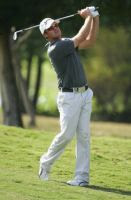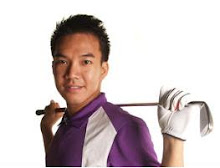Much has been made of the saying "Drive for show, Putt for dough."
Either, that saying needs to carry a caveat - ceteris paribus - or else its just a thoughtless quote.
If you can't drive the ball far and straight enough, then however many putts you make on the green will be meaningless. Who wants to be 6 on and then 1 putt on a par 4 / 5? Not me for sure.
The most important clubs in any golfers' bag are the driver (or equivalent), wedge and putter - in that order.
Here is why...
The Driver One needs to put the drive reasonably far off the tee to have a chance to reach the green in regulation or be near it. It pays to ensure that your driver's loft and shaft flex and weight are suited to your swing speed. Most amateurs use too little loft and too stiff a shaft.
The Wedge If you miss the drive and send it careening into the woods, after a little punch-out (hopefully no heroics here), you will most likely be left with a 50-60m shot to set up a par putt. Here is where the wedges will come in handy.
If you did put your drive in the fairway, but missed your approach to the green, you would still likely need to use your wedge for a pitch shot or some kind of chip to the green to again set up your par putt.
Here, most amateurs are unsure of how far and how fast they need to swing their wedges to achieve the required distances. The wedge game is unlike the normal iron shots where they are typically swung with full swing. The wedge game is an intricate web of different swing lengths, swing speed, ball positions etc to achieve a plethora of high, low, running, spinning shots for different distances to put the ball close to the hole.
I have shots for 40, 50, 60, 70, 80, 90, 100, 110 programmed into my arsenal of wedge shots. Using a combination of 4 wedges, 3 different swing lengths, 3 finish positions, I have a wide range of shots at my disposal for the situation at hand.
Once you put the ball on the dance floor, its time to think about sinking that sucker for birdie, par or bogey.
The PutterFor a scratch golfer, 36 or half of his shots are made on the putting green. If a 24 handicapper quits 3 putting just 9 greens, he would have become a 15 handicapper overnight. What better way to stop 3 putting than by FIRST putting those wedge shots within 8-10 feet where your percentage of sinking them is 50%?
The next steps to becoming a wizard on the greens are:
1) Read the line of the putt. Most people take too little break. Take more break, gravity can at times help pull the ball into the hole.
2) Feel the distance of the putt. Walk from where your ball is to your target (break or hole). This will allow your brain to register the distance required to stroke the ball.
3) Make a putting stroke that is arcing, not a straight back and straight through type.
4) Make imaginary putts. If your putt needs to travel 40 feet, look at the halfway mark of that, which is 20 feet. Make an imaginary stroke and try to "feel" how much force is needed to stroke the ball there.
If you know what gets the ball to 20 feet, just a little bit more will send the ball 30 feet (which happens to be the next halfway point between 20 feet and the final target) right? Again make an imaginary stroke.
Finally now that you have a reference for 30 feet, you now need to have a stroke reference for 40 feet. Go ahead and make that imaginary stroke again.
Now look at your final target and make that reference stroke. Think only in terms of making a beautiful and unhurried stroke. Hopefully the ball went in!
If you follow these keys, its unthinkable not to have your handicap drop.










